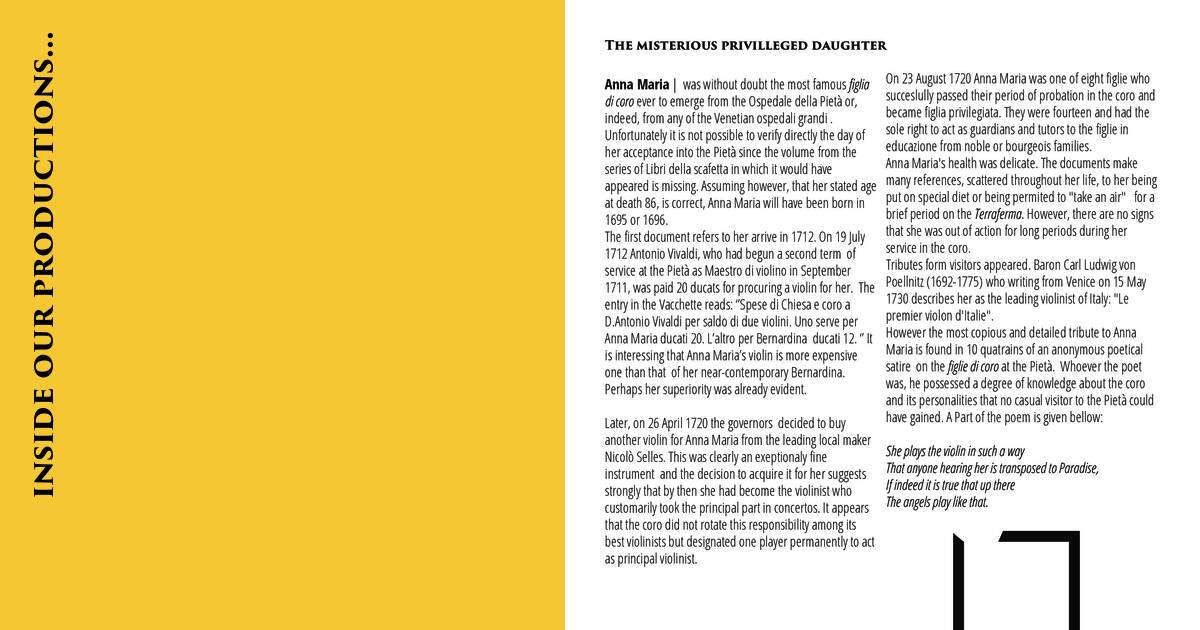
..an excerpt from a booklet from one of our publications... 0046
The mysterious privileged daughter
Anna Maria was without doubt the most famous figlia di coro ever to emerge from the Ospedale della Pietà or, indeed, from any of the Venetian ospedali grandi. Unfortunately, it is not possible to verify directly the day of her acceptance into the Pietà since the volume from the series of Libri della scafetta in which it would have appeared is missing. Assuming, however, that her stated age at death (86) is correct, Anna Maria will have been born in 1695 or 1696.
The first document refers to her arrival in 1712. On 19 July 1712, Antonio Vivaldi, who had begun a second term of service at the Pietà as Maestro di violino in September 1711, was paid 20 ducats for procuring a violin for her. The entry in the Vacchette reads: "Spese di Chiesa e coro a D. Antonio Vivaldi per saldo di due violini. Uno serve per Anna Maria ducati 20. L’altro per Bernardina ducati 12." It is interesting that Anna Maria’s violin is the more expensive one than that of her near-contemporary Bernardina. Perhaps her superiority was already evident.
Later, on 26 April 1720, the governors decided to buy another violin for Anna Maria from the leading local maker Nicolò Selles. This was clearly an exceptionally fine instrument, and the decision to acquire it for her suggests strongly that by then she had become the violinist who customarily took the principal part in concertos. It appears that the coro did not rotate this responsibility among its best violinists but designated one player permanently to act as principal violinist.
On 23 August 1720, Anna Maria was one of eight figlie who successfully passed their period of probation in the coro and became figlia privilegiata. They were fourteen and had the sole right to act as guardians and tutors to the figlie in educazione from noble or bourgeois families.
Anna Maria's health was delicate. The documents make many references, scattered throughout her life, to her being put on a special diet or being permitted to "take an air" for a brief period on the Terraferma. However, there are no signs that she was out of action for long periods during her service in the coro.
Tributes from visitors appeared. Baron Carl Ludwig von Poellnitz (1692-1775), who was writing from Venice on 15 May 1730, describes her as the leading violinist of Italy: "Le premier violon d'Italie."
However, the most copious and detailed tribute to Anna Maria is found in 10 quatrains of an anonymous poetical satire on the figlie di coro at the Pietà. Whoever the poet was, he possessed a degree of knowledge about the coro and its personalities that no casual visitor to the Pietà could have gained. A part of the poem is given below:
She plays the violin in such a way
That anyone hearing her is transposed to Paradise,
If indeed it is true that up there
The angels play like that.
News,Extra


